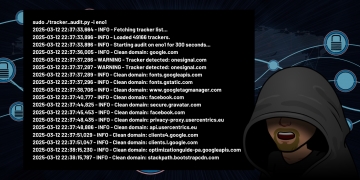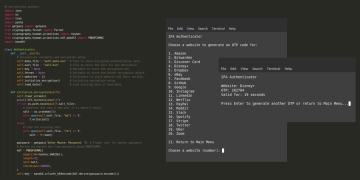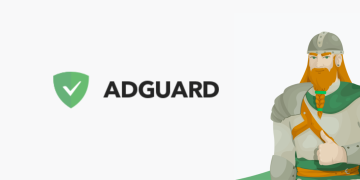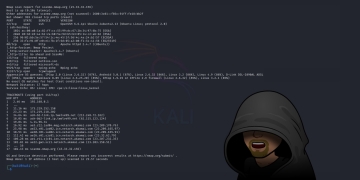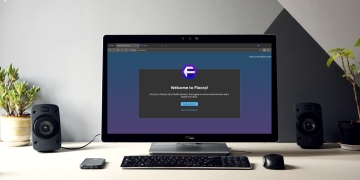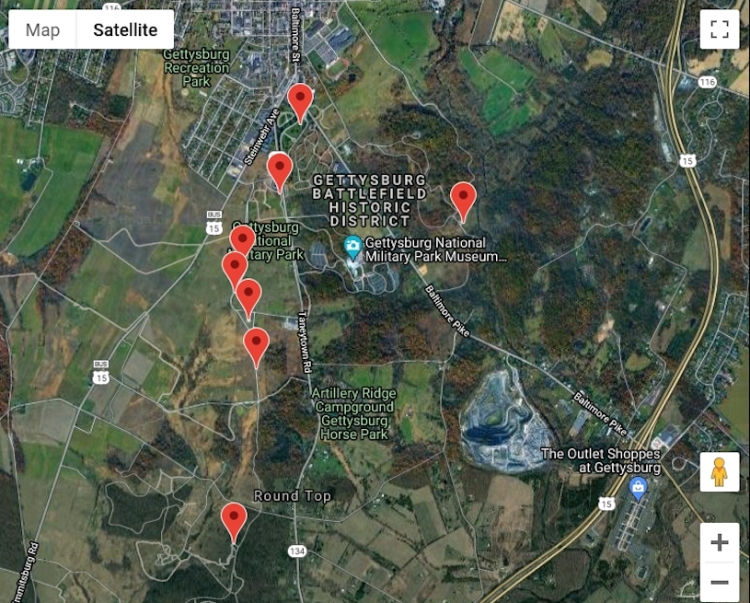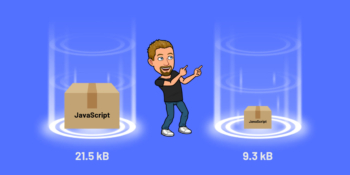Google Maps are quite handy when you need to obtain directions to a location. Many service providers will use a Google Map to show where their business is based or the area they service. In this JavaScript guide, I am going to show you how to obtain a Google API Key and use it to create a Google Map with multiple markers.
How to Get an API Key for Google Maps
Before we can use Google Maps, we need to create an API Key. To do this, you will need to visit the following website and create a new project.
https://console.cloud.google.com/projectcreate
Once you are there, you will need to enter a Project Name. This can be any name that helps identify the project that you are creating (ex. My Google Map). After you have decided on a name hit the “Create” button. This will take you to the Dashboard for your new project.
Now head over to the following page to enable the “Maps JavaScript API,” which is the API that we will be using for this project.
https://console.cloud.google.com/apis/library/maps-backend.googleapis.com
After you have enabled the JavaScript API for Google Maps, we will need to head over to the Credentials page.
https://console.cloud.google.com/apis/credentials
Once you have navigated to this page, click on the “Create Credentials” link at the top of the page and choose “API Key”. This will generate the API Key that we will need for the project. Be sure to copy the API Key and save it somewhere safe because we will be needing it later on in this project.
Example API Key:
BmzaTyDxTJXamo4ZtWrCpZEOpJoJ2xz2nbQMuAcLet’s Get Started
Now that we have our API Key for Google Maps, we can begin writing the code to display a Google Map on our website.
Create an HTML Page
This is the basic HTML for setting up our website to include the Google Map. This template will display a map that is the full height and width of the page. The #map ID within the style tag allows you to further adjust the styling of the map’s DIV container.
<html lang="en">
<head>
<meta charset="utf-8" />
<meta name="viewport" content="width=device-width, initial-scale=1" />
<style>
body {
margin: 0;
}
#map {
height: 100%;
width: 100%;
background-color: grey;
}
</style>
<title>My First Google Map</title>
</head>
<body>
<div id="map"></div>
</body>
</html>Add the Google Map API
Now that we have our basic HTML setup, it is time to add the script that will allow us to use the Google Maps API.
<script src="https://maps.googleapis.com/maps/api/js?key=YOUR_API_KEY&callback=initMap" async></script>
We will be calling the Google Maps API asynchronously, which means the script will load in the background while the rest of the page continues to load. This script also contains two more important parameters: key and callback. The key will be used to store your API key and the callback is used to call a function that will help define the map. Replace the YOUR_API_KEY value with the API key that you generated earlier.
Now let’s add the script to our previous HTML structure.
<html lang="en">
<head>
<meta charset="utf-8" />
<meta name="viewport" content="width=device-width, initial-scale=1" />
<style>
body {
margin: 0;
}
#map {
height: 100%;
width: 100%;
background-color: grey;
}
</style>
<title>My First Google Map</title>
</head>
<body>
<div id="map"></div>
<script src="https://maps.googleapis.com/maps/api/js?key=YOUR_API_KEY&callback=initMap" async></script>
</body>
</html>Adding the Callback
The only thing left before we can display the Google Map is the callback. This is one of the most important pieces of our project. It not only displays the map, but also allows us to define our starting coordinates, markers, and additional options.
function initMap() {
var mapOptions = {
center: {
lat: 39.807305,
lng: -77.224207
},
zoom: 14,
mapTypeId: 'hybrid'
};
var map = new google.maps.Map( document.getElementById( "map" ), mapOptions );
}The above callback function will display a basic hybrid map with no markers on your page. The center option will center the map to the latitude and longitude coordinates. You can adjust how far or how close you want to view the map with the zoom option. The smaller the zoom number, the further out the zoom level is, and the larger the zoom number, the closer the zoom level is. We can set a map type that is displayed with the mapTypeId option. There are four basic map types that can be used, which are hybrid, satellite, roadmap, and terrain.
How good is a map without markers? A map without markers isn’t very useful. We use markers to show places of interest on a map. In the following function, we are going to be defining several points of interest and generate a marker for each interest on the map.
function create_markers( map ) {
var marker;
var infowindow = new google.maps.InfoWindow();
var markers = [
["Delaware State Monument", "39.8161", "-77.23247"],
["Indiana State Monument", "39.814138", "-77.216287"],
["New York State Monument", "39.8208", "-77.2306"],
["New York Auxiliary State Monument", "39.8043", "-77.23445"],
["Pennsylvania State Memorial", "39.807588", "-77.235153"],
["United States Regulars Monument", "39.811217", "-77.235683"],
["United States Signal Corps Marker", "39.79254", "-77.236503"],
["Vermont State Monument", "39.80945", "-77.23636"],
];
for ( var i = 0; i < markers.length; i++ ) {
marker = new google.maps.Marker({
position: new google.maps.LatLng( markers[i][1], markers[i][2] ),
map: map
});
google.maps.event.addListener( marker, 'click', ( function( marker, i ) { return function() {
infowindow.setContent( markers[i][0] );
infowindow.open( map, marker );
}})(marker, i));
}
google.maps.event.addListener( map, 'click', function() {
infowindow.close();
});
}The above function will iterate through a list called markers and create a marker on the map for each item in the list. The first element in each sub-list is the content that will be displayed in an info window when the marker is clicked. The second and third elements in each sub-list are the latitude and longitude for the location. An additional event listener was added outside of the loop to close the info window if the map is clicked.
In order to use the create_markers function, we will need to call it from the initMap function. This will allow the base map to load and then the markers.
function initMap() {
var mapOptions = {
center: {
lat: 39.807305,
lng: -77.224207
},
zoom: 14,
mapTypeId: 'hybrid'
};
var map = new google.maps.Map( document.getElementById( "map" ), mapOptions );
create_markers( map );
}Our Final Project
We have gone through each piece of code and it’s now time to put it all together.
<html lang="en">
<head>
<meta charset="utf-8" />
<meta name="viewport" content="width=device-width, initial-scale=1" />
<style>
body {
margin: 0;
}
#map {
height: 100%;
width: 100%;
background-color: grey;
}
</style>
<title>My First Google Map</title>
</head>
<body>
<div id="map"></div>
<script>
function create_markers( map ) {
var marker;
var infowindow = new google.maps.InfoWindow();
var markers = [
["Delaware State Monument", "39.8161", "-77.23247"],
["Indiana State Monument", "39.814138", "-77.216287"],
["New York State Monument", "39.8208", "-77.2306"],
["New York Auxiliary State Monument", "39.8043", "-77.23445"],
["Pennsylvania State Memorial", "39.807588", "-77.235153"],
["United States Regulars Monument", "39.811217", "-77.235683"],
["United States Signal Corps Marker", "39.79254", "-77.236503"],
["Vermont State Monument", "39.80945", "-77.23636"],
];
for ( var i = 0; i < markers.length; i++ ) {
marker = new google.maps.Marker({
position: new google.maps.LatLng( markers[i][1], markers[i][2] ),
map: map
});
google.maps.event.addListener( marker, 'click', ( function( marker, i ) { return function() {
infowindow.setContent( markers[i][0] );
infowindow.open( map, marker );
}})(marker, i));
}
google.maps.event.addListener( map, 'click', function() {
infowindow.close();
});
}
function initMap() {
var mapOptions = {
center: {
lat: 39.807305,
lng: -77.224207
},
zoom: 14,
mapTypeId: 'hybrid'
};
var map = new google.maps.Map( document.getElementById( "map" ), mapOptions );
create_markers( map );
}
</script>
<script src="https://maps.googleapis.com/maps/api/js?key=YOUR_API_KEY&callback=initMap" async></script>
</body>
</html>
We have completed the guide for adding a Google Map to a website. If you have done everything correctly, your page should display a map similar to the one below. One thing else that I would like to recommend before displaying your map on a public website and that is to restrict your API Key to your website’s domain. This will prevent others from using your API Key to display maps on their websites, which could cause your account to be limited or charged depending on its over-usage.



